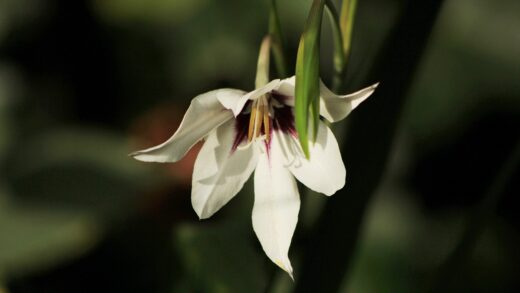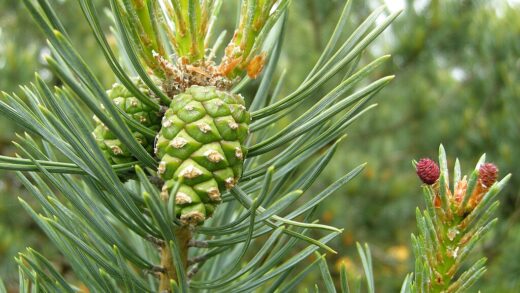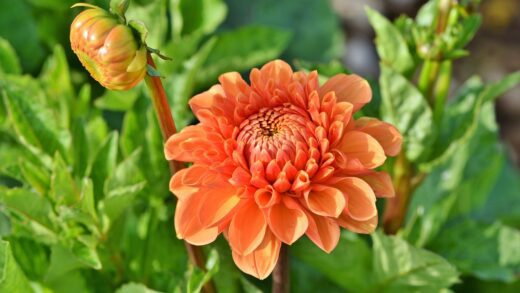Cosmos bipinnatus, commonly known as cosmos, is a remarkably low-maintenance and rewarding annual that brings a delicate, airy charm to any garden setting. These plants are celebrated for their daisy-like flowers that dance atop long, slender stems, creating a soft, meadow-like effect from summer until the first frost. Proper care for cosmos is less about intensive intervention and more about providing the right initial conditions and performing simple, regular tasks to encourage vigorous growth and a profusion of blooms. Understanding their basic needs for sunlight, water, and soil is the foundation for a successful display, allowing even novice gardeners to cultivate a stunning floral feature with minimal effort and maximum visual impact.
While they are famously easy to grow, a few key practices can elevate your cosmos from merely surviving to truly thriving. The primary focus of their care revolves around managing their rapid growth and ensuring the flowering period is as long and productive as possible. This involves strategic watering, minimal feeding, and consistent removal of spent flowers to redirect the plant’s energy into producing new buds. Additionally, providing some form of support for taller varieties can prevent them from breaking or flopping over in wind and rain, preserving the elegant structure of your garden design. Adhering to these fundamental principles will ensure your cosmos plants are healthy, robust, and a continuous source of beauty throughout the growing season.
The true beauty of caring for cosmos lies in its simplicity, which allows the gardener to enjoy the process without feeling burdened by complex horticultural demands. These plants are native to Mexico and are well-adapted to conditions that might challenge other, more delicate flowers, including poor soil and periods of dryness. This inherent resilience makes them an ideal choice for filling large areas, creating background plantings, or adding height and movement to mixed borders. By embracing their easy-going nature and providing basic attention, you can create a breathtaking display that attracts pollinators and adds a touch of wild elegance to your outdoor space.
Ultimately, successful cosmos cultivation is an exercise in understanding that sometimes less is more in the garden. Over-fertilizing can lead to lush foliage at the expense of flowers, and over-watering can cause root rot and other issues. The goal is to replicate the conditions of their native habitat: plenty of sun, well-drained soil, and moderate moisture. By mastering these simple aspects of their care, you unlock the full potential of these delightful flowers, ensuring a season-long spectacle of color and life that requires surprisingly little in return for the immense joy it provides.
Site selection and soil preparation
Choosing the right location is the most critical first step in ensuring your cosmos flourish. These plants are sun-worshippers and require a minimum of six to eight hours of direct sunlight each day to produce strong stems and abundant flowers. A location with full sun exposure is ideal, as shadier spots will result in leggy, spindly plants with sparse blooms. When scouting for the perfect place, observe your garden throughout the day to identify areas that receive consistent, unfiltered sunlight, especially during the peak midday hours. This will provide the energy the plants need for photosynthesis and robust floral development.
More articles on this topic
The quality of the soil is another fundamental aspect of cosmos care, although their requirements are not demanding. Cosmos thrive in soil with average to poor fertility and excellent drainage; overly rich or heavily amended soil is actually detrimental. Rich soil encourages the plant to produce an excess of foliage and fewer flowers, which is contrary to the gardener’s goal. An ideal soil is light, somewhat sandy or loamy, and allows water to pass through freely, preventing the roots from becoming waterlogged. Before planting, it is beneficial to loosen the soil to a depth of about 20-30 centimeters to improve aeration and drainage.
If your garden consists of heavy clay soil, amending it is essential for success with cosmos. Clay soil retains too much moisture and can become compacted, leading to root rot and other fungal diseases. To improve its structure, incorporate organic matter such as compost, peat moss, or well-rotted manure, but do so sparingly. The goal is to improve drainage and texture, not to create a nutrient-rich environment. For very heavy soils, creating raised beds can be an excellent solution, as it allows you to control the soil composition completely and ensure perfect drainage from the outset.
The pH of the soil is a less critical factor for cosmos, as they are adaptable to a wide range of conditions, but they generally perform best in soil that is neutral to slightly alkaline. A soil pH between 6.0 and 8.0 is perfectly acceptable. Most garden soils naturally fall within this range, so pH modification is rarely necessary. The primary focus should always remain on providing excellent drainage and avoiding excessive fertility, as these two factors have the most significant impact on the health and flowering capacity of the plants.
Ongoing maintenance during the growing season
Once your cosmos are established, ongoing maintenance is straightforward and primarily focuses on a few key tasks to keep the plants healthy and blooming prolifically. One of the most important of these tasks is deadheading, which is the practice of removing spent flowers. Regularly snipping off faded blooms prevents the plant from setting seed, which signals it to slow down or stop flower production. This simple action redirects the plant’s energy into creating new buds, thereby extending the flowering season significantly, often right up until the first frost of autumn.
More articles on this topic
Taller varieties of cosmos, which can easily reach heights of 1.5 meters or more, will likely require some form of support to prevent them from bending or breaking in strong winds or heavy rain. This is especially true in more exposed garden locations. You can use individual stakes for each plant or create a support system for a larger grouping using stakes and twine to form a grid for the plants to grow through. It is best to put these supports in place early in the season, when the plants are still relatively small, to avoid damaging the root systems later on.
Weed control is another important aspect of ongoing maintenance, particularly when the cosmos plants are young and still establishing themselves. Weeds compete with your flowers for essential resources such as water, nutrients, and sunlight, which can hinder their growth and overall performance. Applying a layer of organic mulch, such as wood chips or straw, around the base of the plants can help suppress weed growth, retain soil moisture, and keep the soil temperature more consistent. Be sure to leave a small gap around the stems to prevent moisture from accumulating and causing rot.
As the season progresses, monitor your plants for any signs of stress, such as yellowing leaves or a sudden decline in flowering. While cosmos are generally trouble-free, these symptoms can indicate issues like over-watering or, in rare cases, a nutrient deficiency. However, it is more often a sign of too much water or fertilizer. Adjusting your care routine based on these observations is key to maintaining healthy plants. A light touch is always best; these plants thrive on a degree of neglect and often perform better when not fussed over too much.
Water and nutrient management
Proper water management is crucial for cosmos, yet it follows the principle of moderation. These plants are relatively drought-tolerant once established, thanks to their origins in the dry regions of Mexico. During the initial stages after planting, they require consistent moisture to help their root systems develop. However, once they are actively growing, it is best to water them deeply but infrequently. Allow the top few centimeters of soil to dry out completely between waterings. This practice encourages the roots to grow deeper in search of moisture, making the plant more resilient during dry spells.
Over-watering is one of the most common mistakes made when caring for cosmos. Saturated soil can lead to a host of problems, with root rot being the most severe. This fungal disease attacks the roots, impairing their ability to absorb water and nutrients, which ultimately leads to the plant’s decline and death. Signs of over-watering include yellowing leaves, wilting stems, and a general lack of vigor, which can sometimes be mistaken for signs of drought. Always check the soil moisture with your finger before reaching for the hose; if it feels damp, wait another day or two before watering.
When it comes to nutrient management, cosmos have very modest needs. In fact, they perform best in soil that is not overly rich. Excessive nitrogen, a common component of all-purpose fertilizers, will stimulate lush, green foliage growth at the expense of flowers. This results in a large, bushy plant with very few blooms, which is a disappointing outcome for any gardener. For this reason, it is generally recommended to avoid fertilizing cosmos altogether, especially if they are planted in average garden soil.
If your soil is extremely poor and sandy, a single application of a low-nitrogen, high-phosphorus fertilizer at the beginning of the season may be beneficial. Phosphorus is the nutrient that promotes bloom development, so a formula with a higher middle number (such as a 5-10-5 ratio) can give the plants a gentle boost without encouraging excessive leaf growth. Apply this sparingly and only once. In most cases, however, your cosmos will find all the nutrients they need in the existing soil, proving once again that these delightful flowers truly thrive on minimal intervention.
Encouraging continuous blooming
The single most effective technique for ensuring a long and continuous display of cosmos flowers is diligent deadheading. As soon as a flower begins to fade and lose its petals, it should be removed. This prevents the plant from investing its energy in seed production and instead encourages it to channel that energy into forming new flower buds. To deadhead properly, trace the stem of the spent flower down to the first set of leaves and make a clean cut. This not only keeps the plant looking tidy but also stimulates new growth from that point, often resulting in a bushier, more floriferous plant.
Another effective strategy to promote more blooms is a practice known as “pinching back,” which is best done when the plants are young. When the seedlings reach a height of about 20-30 centimeters, use your fingers or a pair of clean snips to remove the top few centimeters of the main growing stem, just above a set of leaves. This may seem counterintuitive, but it removes the plant’s apical dominance and encourages it to send out side shoots from the leaf nodes below the cut. The result is a much fuller, bushier plant with significantly more branches, each of which will produce its own flowers.
Ensuring adequate sunlight is also a non-negotiable factor for continuous blooming. Cosmos are full-sun plants, and a lack of sufficient light is a primary reason for poor flowering. If your plants are not producing as many flowers as expected, assess their location. Are they being shaded by taller, neighboring plants or a nearby structure for part of the day? While you cannot easily move established plants, this observation can inform your planting strategy for the following year. Maximum sun exposure directly translates to maximum flower production for these sun-loving annuals.
Finally, avoid the temptation to over-care for your cosmos, particularly with water and fertilizer. As previously mentioned, too much nitrogen fertilizer will result in a leafy plant with few flowers, and consistently wet soil can lead to root diseases that inhibit the plant’s overall health and ability to bloom. A lean and slightly dry environment mimics their native habitat and triggers the plant’s natural impulse to flower profusely. By providing these simple conditions and practicing regular deadheading, you will be rewarded with an uninterrupted show of delicate, beautiful blooms all season long.
End-of-season care and seed saving
As the growing season draws to a close and autumn approaches, the care for your cosmos plants will shift towards preparing for the end of their life cycle. Continue to deadhead the plants through late summer to prolong the floral display for as long as possible. However, as the first frost date nears, you may want to allow some of the last flowers to fade and develop into seed heads. This will provide you with a free and sustainable source of seeds for the following year’s garden, allowing you to enjoy these beautiful flowers year after year without any additional cost.
Collecting seeds from cosmos is an incredibly simple and rewarding process. Choose healthy, vigorous plants with desirable flower characteristics to save seeds from. Allow the flower heads to wither and dry completely on the stem; the petals will fall off, and the central disc will turn brown and become brittle. Once fully dry, you can snip off the entire seed head and store it in a paper bag. The seeds themselves are the small, dark, needle-like structures that form in the center. You can easily separate them from the chaff by gently crushing the dried head in your hands.
Proper storage of the collected seeds is essential to ensure their viability for the next season. After separating the seeds from the rest of the flower head, spread them out on a plate or a screen in a cool, dry, well-ventilated area for a few more days to ensure they are completely free of moisture. Any remaining moisture can cause them to mold or rot in storage. Once they are bone dry, place them in a labeled paper envelope or a small glass jar and store them in a cool, dark, and dry location, such as a closet or a drawer, until it is time to sow them the following spring.
After the first hard frost, your annual cosmos plants will die back and their life cycle will be complete. At this point, the plants can be removed from the garden and added to your compost pile. Clearing away the dead plant material helps to keep the garden tidy and reduces the chances of any potential diseases or pests overwintering in the debris. This final act of cleanup prepares your garden beds for the winter and sets the stage for a fresh start in the spring, when you can sow the seeds you saved and begin the delightful cycle all over again.

















